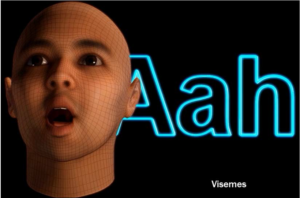Recent Software Case Gives Important Lessons For Biotech
Oct 10th, 2016 by Nicholas Vincent | News | Recent News & Articles |
On September 13, the Federal Circuit held that a series of ordered combination of steps related to lip-synch software did not constitute an abstract idea, and was subsequently patent eligible under §101 (McRO, Inc. v. Bandai Namco Games America). This decision reversed and remanded an earlier decision issued by the United States District Court for the Central District of California in McRO, Inc. v. Sony Computer Entertainment America, LLC. This case, which was followed closely by the IT community, also has important, positive implications for the patent eligibility of biotech inventions.
The earlier decision asserted in 2014 that U.S. Patent Nos. 6,307,576 (‘576) and 6,611,278 (‘278) were invalid, as they were not based on patentable claims under §101. In particular, the decision held that, although there were novel portions of the invention, they were claimed too broadly, thereby invalidating the patents. Patents ‘576 and ‘278 share the same title (“Method for Automatically Animating Lip Synchronization and Facial Expression of Animated Characters”).
In the current ruling, the Court sought to apply the two-step Alice test, a test that first addresses whether the claims are directed toward an abstract idea, and if they are, then considers whether the claims recite something “significantly more” that makes the claims patent-eligible. In applying the first step of the Alice test, the Court found that representative Claim 1 of ‘576, which focuses on particular improvements in computer animation, is not directed towards an abstract idea. In addition, the Court went on to state that the advancement represents a significant improvement on the prior art. As a result, step one of the Alice test is not met, and the software-encoded combination of steps for the lip-synch software is therefore patent eligible under §101. Interestingly, the Court did not reach step two of the test, showing that it is possible to pass the Alice test on step one alone, giving hope to future claims that may face Alice-related challenges.
Interestingly, McRO maintained in its position that the claims are patent eligible because they constitute an improvement in animation, regardless of whether they are claiming an abstract idea. In fact, McRO claimed that Diamond v. Diehr was the relevant precedent since the final product is a 3-D video and not an abstract idea. This was challenged by the defendants who claimed that a past case, Parker v. Flook, was most pertinent to the patentability of the lip-synch software mainly because McRO was patenting what the defendants claimed was an unpatentable algorithm. The Court, as previously stated, held otherwise.

The image represents a ‘viseme’ (a representation of a character from the lip-synch software making a sound). In this image from McRO, Inc. v. Bandai Namco Games America, the character is making the ‘aah’ sound, which corresponds to one component of a more complex and programmable speech pattern.
The highly anticipated McRO decision comes on the tails of three recent decisions also by the Federal Circuit: the Rapid Litigation Management, Enfish and Bascom decisions, the latter two of which are also from the computer/ software realm, and not the biotech world. Together, these decisions are expected to play an important role in guiding the formation of patent-eligible claims that, historically, would have likely been considered patent-ineligible under the Alice test. Specifically, and in relation to the McRO decision, claiming improvements on prior art seems to be both a promising and successful way of overcoming potential Alice-related challenges.
Together, McRO, Rapid Litigation Management, Enfish, and Bascom give the biotech field important guidance in developing patent-eligible biotech claims. Not only does this new developing precedent grant the potential for expanded patentability, but it also provides a clearer means to overcoming Alice-related challenges in the future. The message for biotech is to craft claims and set up the background in the specification to clearly point out the importance and improvements of the technology. Clearly, if there is an improvement over the state of the art, this bodes well for patent eligibility.
For biotechnology, the implication of expanded patentability is particularly promising; as biotechnology research engages more frequently with larger data sets and uses more complex, quantitative, and software-based approaches to answer questions, computing and software will play a larger role in these research endeavors. Computers and software are becoming increasingly more enmeshed with many areas of biotech research and developments. Moving forward, the ability to successfully defend algorithm-based patents against Alice challenges on the tails of McRO will likely focus primarily on the improvements over prior art, a shift from an earlier focus on the abstract nature of the innovation in question.
– Nicholas Vincent and Anthony D. Sabatelli, PhD, JD
This article is for informational purposes, is not intended to constitute legal advice, and may be considered advertising under applicable state laws. The opinions expressed in this article are those of the author only and are not necessarily shared by Dilworth IP, its other attorneys, agents, or staff, or its clients.
